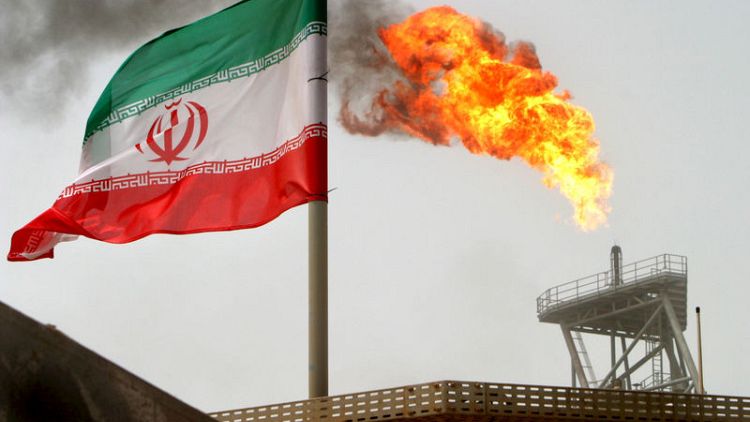By Nidhi Verma
NEW DELHI (Reuters) - A surge in India's oil imports from the United States outpaced growth in shipments from its traditional suppliers in the Middle East, after Washington imposed sanctions on Tehran in November, according to tanker arrival data obtained from sources.
U.S. President Donald Trump's administration renewed sanctions against Iran last year over its nuclear programme, although some buyers were allowed to continue taking limited volumes of Iranian oil under a six-month waiver.
In May, the United States ended those exemptions and said countries that continued to buy Iranian oil would face sanctions, but India buyers had already begun shifting some of their sourcing away from the Middle East.
India, the world's third-biggest oil importer, bought about 184,000 barrels per day (bpd) oil from the United States over November 2018 to May 2019, compared with about 40,000 bpd in the same period a year earlier, the tanker data obtained from shipping and industry sources showed.
Over this same period, India, which through May was Iran's second-biggest oil client after China, took 48% less oil from Tehran at about 275,000 bpd, the data showed.
U.S. Secretary of State Mike Pompeo https://www.state.gov/secretary-of-state-michael-r-pompeo-at-the-india-ideas-summit-and-44th-annual-meeting-of-the-u-s-india-business-council, who will be in New Delhi on Tuesday, earlier this month said India should boost oil and gas purchases from Washington to cut reliance on difficult regimes like those found in Venezuela and in Iran.
A previous round of sanctions against Iran - that began in early 2012 and ended in 2016 - allowed Saudi Arabia and Iraq to raise their Asian market share. India also raised the volumes it took from Venezuela in that period to fill the Iranian oil gap.
But market dynamics have changed, with the United States becoming the world's top oil producer.
"Venezuela's oil output is now declining. Saudi grades are costly, and Iraq has limited capacity to sell extra oil. So Indian refiners can't escape from U.S. oil," said Sri Paravaikkarasu, director for Asia oil at energy consultancy FGE.
She said the higher official selling prices (OSPs) of Middle Eastern grades and rising spot premium are also pushing India to buy more U.S. oil.
India's intake of Saudi oil during the seven months to May rose by 11% to 804,000 bpd, while that from the United Arab Emirates jumped by 37% to about 360,000 bpd, the data showed.
(Graphic: India crude oil imports from top suppliers since Iran sanctions took effect link: https://tmsnrt.rs/31ILGRv).
Imports from Iraq declined 3.3% to 1.01 million bpd, the data also showed.
In contrast, crude imports from the United States have more than quadrupled.
Ahead of the tougher U.S. sanctions this year, Indian refiners had rejigged their annual deals to buy more oil from some suppliers, including Mexico, and signed new contracts with the United States.
Also, over the last few years, Indian refiners have installed secondary units to be able to process cheaper, lower-quality crude grades.
"Indians can blend heavy sour grades from Mexico with sweet oil from the U.S. and other sources to get medium sour crude similar to the Middle Eastern crude," said Ehsan Ul-Haq, lead analyst for Oil Research and Forecasts at Refinitiv.
India's oil imports from Mexico rose by about 13% in the November 2018-May 2019 period from a year earlier to 268,000 bpd, the data showed.
"U.S. crude is available at a deep discount to Brent, very often even to Dubai and Oman. There is a scope that Indians will buy more U.S. crude because it will remain at a discount to Brent," Haq said.
West Texas Intermediate crude futures are running at around $7 to $8 a barrel cheaper than international benchmark Brent futures.
(Graphic: India: Filling the Iranian oil void png link: https://tmsnrt.rs/2XkDdRD).
(Reporting by Nidhi Verma; Editing by Tom Hogue)



